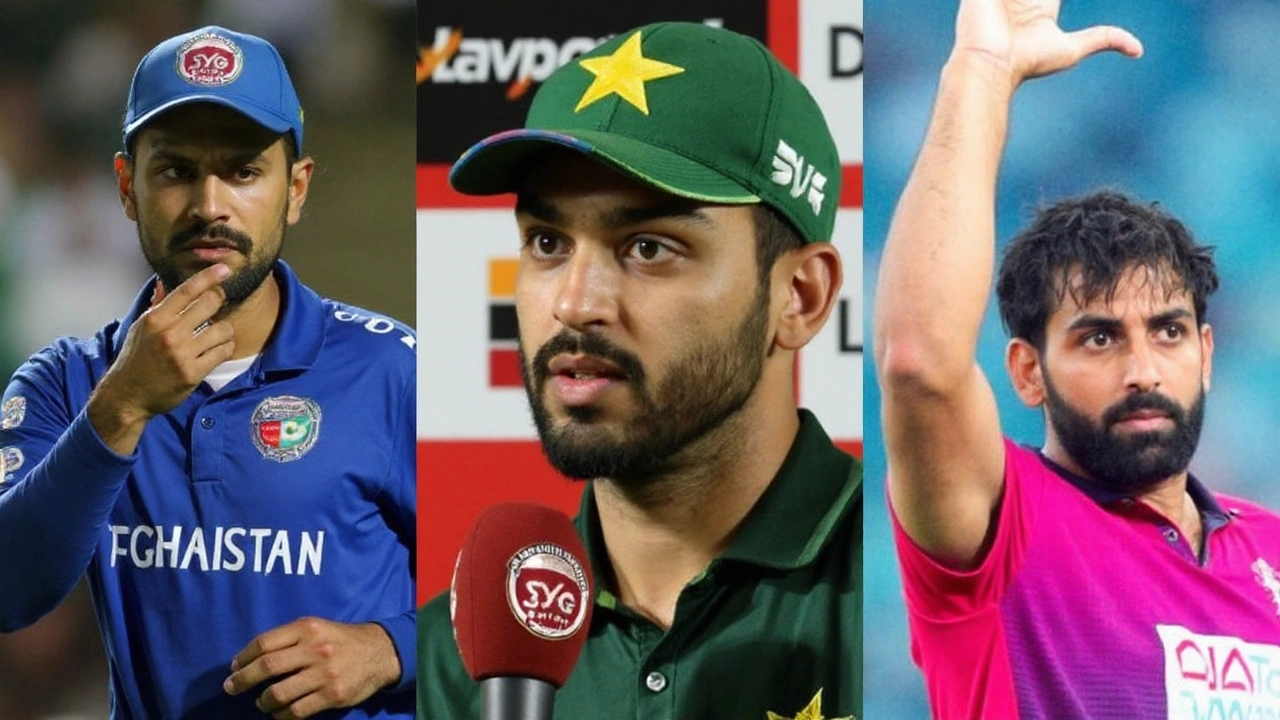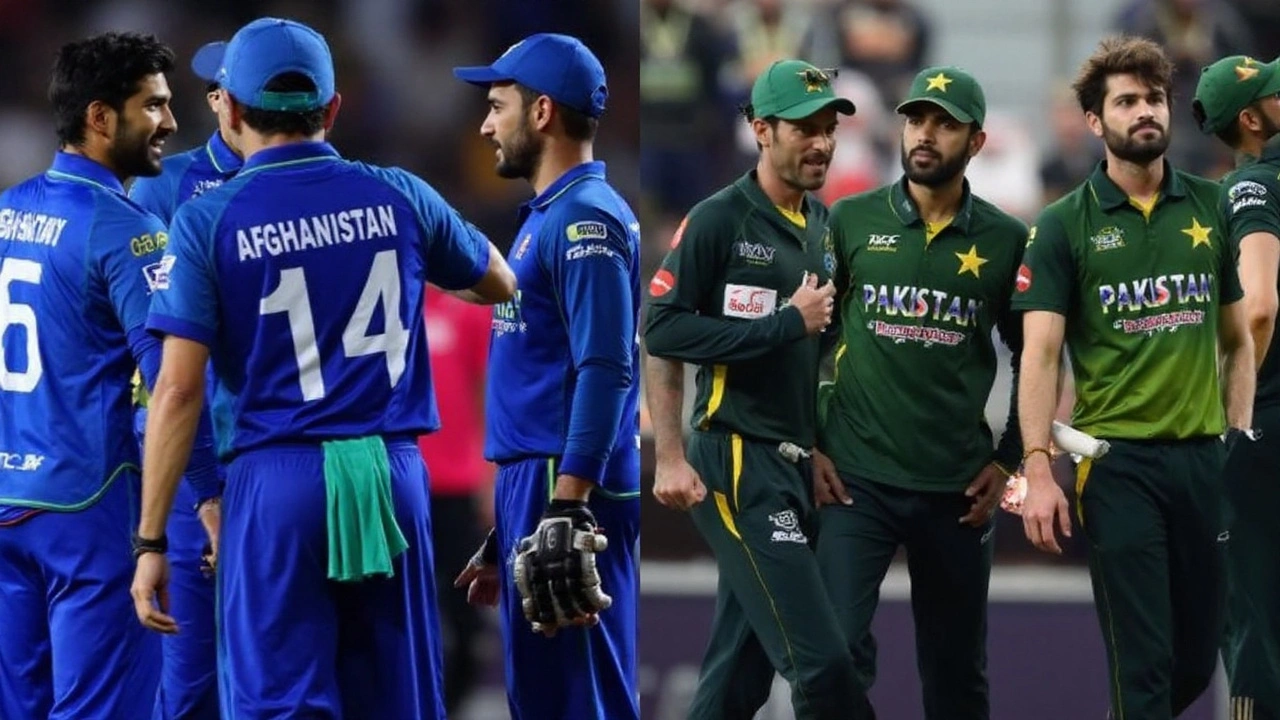Sharjah usually rewards the chaser. Nine of the last ten games here were won by the team batting second. Pakistan tore up that script. The AFG vs PAK opener of the UAE T20I Tri-Series 2025 went Pakistan’s way by 39 runs after a ruthless bowling burst turned Afghanistan’s chase on its head.
Played on August 29 at the Sharjah Cricket Stadium, this first T20I doubled as a dress rehearsal for the Asia Cup starting September 9. Both sides experimented. Afghanistan, led by Rashid Khan, folded in fresh pace and spin options, with Abdollah Ahmadzai and AM Ghazanfar in the mix and opener Ibrahim Zadran returning. Pakistan handed the reins to Salman Ali Agha for this series, resting big names Babar Azam and Mohammad Rizwan, and leaning on a deep, six-bowler setup packed with all-rounders.
Pakistan flip the Sharjah script
Pakistan won the toss and chose to bat, a bold call at a venue that usually tilts toward chasing. The openers gave them a punchy start. Saim Ayub’s intent and Fakhar Zaman’s power meant Afghanistan’s new-ball plans never settled, but tight middle-overs bowling dragged Pakistan back to 83/4. That’s when Salman steadied the night.
The captain played the moment, not the reputation. Salman’s half-century wasn’t flashy; it was organized, full of smart rotation and clean strikes when Afghanistan missed. He found a reliable partner in Mohammad Nawaz. Together they stitched a 50-run stand that kept wickets in hand and the asking rate honest. Those overs bled Afghanistan’s momentum and took Pakistan to a competitive 183, a total that needed skill to defend on a ground known for short straight boundaries.
Selection mattered. Pakistan’s XI offered range: Shaheen Afridi and Haris Rauf for pace up front and at the death, Nawaz and Abrar Ahmed for spin, plus utility from Hussain Talat and Faheem Ashraf. That depth showed later. Even when a couple of overs went loose, Salman had options to plug the gaps and change angles.
Afghanistan’s chase began on script for a successful pursuit. The top order kept pace with the board and reached 92/2, which in Sharjah is usually a launchpad. Then came the swing of the game. Over 17 balls, Afghanistan lost five wickets for just four runs. Haris Rauf and left-arm wrist-spinner Sufiyan Muqeem sledgehammered the middle order with two wickets each in that window, mixing heavy length with sharp pace and ripping spin. From 92/2 to 97/7, the contest was all but done.
Rauf’s plan was direct: chest-high hard length, big pace, and a stump-line that forced rushed shots. Muqeem bowled wider lines with drift, pulling batters across the crease and forcing errors against the spin. Nawaz chipped in with three-dimensional value—runs, control, and calm—while Shaheen kept a lid on the powerplay and death. Afghanistan never recovered, and the innings shut down 39 short of the target at 144.
- Pakistan 183 after choosing to bat; Salman Ali Agha hit a crucial half-century.
- Salman and Mohammad Nawaz added 50 for the fifth wicket to reset the innings.
- Afghanistan 92/2 before losing 5 wickets for 4 runs in 17 balls.
- Haris Rauf and Sufiyan Muqeem took two apiece in the decisive burst; Pakistan won by 39 runs.
The result matters more than a series opener usually does because of where and how it happened. Sharjah’s chasing bias is real; Pakistan fought it with clear phases: a brisk start, a rebuild, then a late-overs push. With the ball, they used matchups smartly—pace at the body when set batters were looking to free arms, spin when new batters were in, and field placements that protected straight boundaries while inviting risk square.

What the result tells us
For Pakistan, the takeaways are sharp. Resting Babar and Rizwan wasn’t just about workload; it was about testing depth and finding a Plan B in pressure. Salman’s calm fifty and savvy bowling rotations suggest leadership fit for tight games. Nawaz’s all-round utility locks his spot in most conditions. Saim and Fakhar as an attack-minded opening pair keeps Pakistan in the modern T20 lane—fast starts, then adapt.
There’s also the bowling balance. Rauf’s strike power makes any total defendable when he gets rhythm. Muqeem’s role adds variety—left-arm wrist spin is gold in T20s if you can land it. Abrar’s mystery spin didn’t need to run through a side here, but he squeezed quietly, which is often how T20 games are won: by the over you don’t notice because it gives nothing.
Afghanistan will be annoyed by the collapse but won’t panic. The top order did the first bit right: absorb the early overs and keep the rate in reach. The middle overs are the fix. They’ll want clearer roles and better strike rotation against finger spin, plus a check on risk tolerance against pace when the ball climbs. In UAE conditions, their spin attack is usually the headline; this game showed they also need a stable middle-order template for chases in the 170–185 band.
Personnel-wise, the return of Ibrahim Zadran adds calm at the top, and Rashid’s presence always tilts tactics, but the newer names—like Abdollah Ahmadzai and AM Ghazanfar—will need overs and patience. The tri-series gives exactly that: space to learn without the elimination pressure of a knockout tournament.
Conditions played a quiet role. The surface had enough grip to reward slower balls and spin if you hit a hard length, but it wasn’t a minefield. Dew didn’t dominate, which kept Pakistan’s spinners in business. Boundary dimensions at Sharjah tempt straight hitting; Pakistan’s bowlers aimed back-of-a-length into the pitch to take that option away, forcing horizontal-bat shots square of the wicket where the field was set.
Tactically, Pakistan’s powerplay blueprint looked clear: frontload intent with the bat, then throttle pace through the middle with spin and cutters. Afghanistan’s plan was sensible—take it deep and cash in late—but the shift from consolidation to acceleration wobbled when Rauf and Muqeem hit their marks. Expect them to address that gear change quickly; this batting unit has enough range to correct it within a game or two.
With the Asia Cup a week away, this win gives Pakistan clarity and confidence. They defended a par-plus total at a chasing ground, got leadership returns from Salman, and saw their bowling combinations click. Afghanistan got a sharp reminder of T20’s thin margins and a checklist they can act on immediately: solidify the middle, choose their accelerators, and protect against short, hostile pace during the transition overs.
The tri-series rolls on with both sides set to face the hosts before meeting again. If there’s a rematch in Sharjah, count on Afghanistan to recalibrate and Pakistan to double down on their matchups. Either way, the series has already delivered what both teams wanted: real minutes in the middle and honest answers ahead of Asia Cup 2025.
